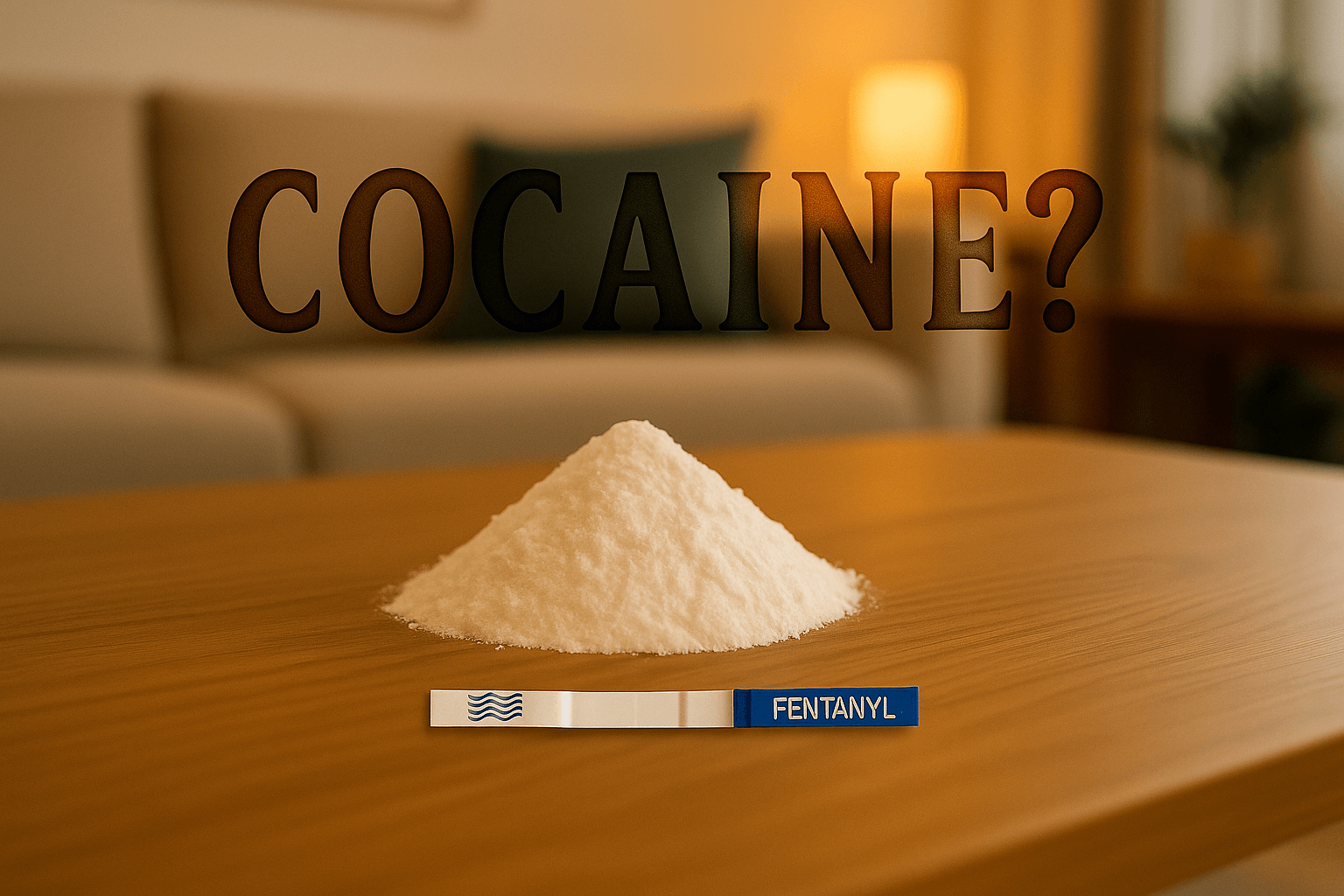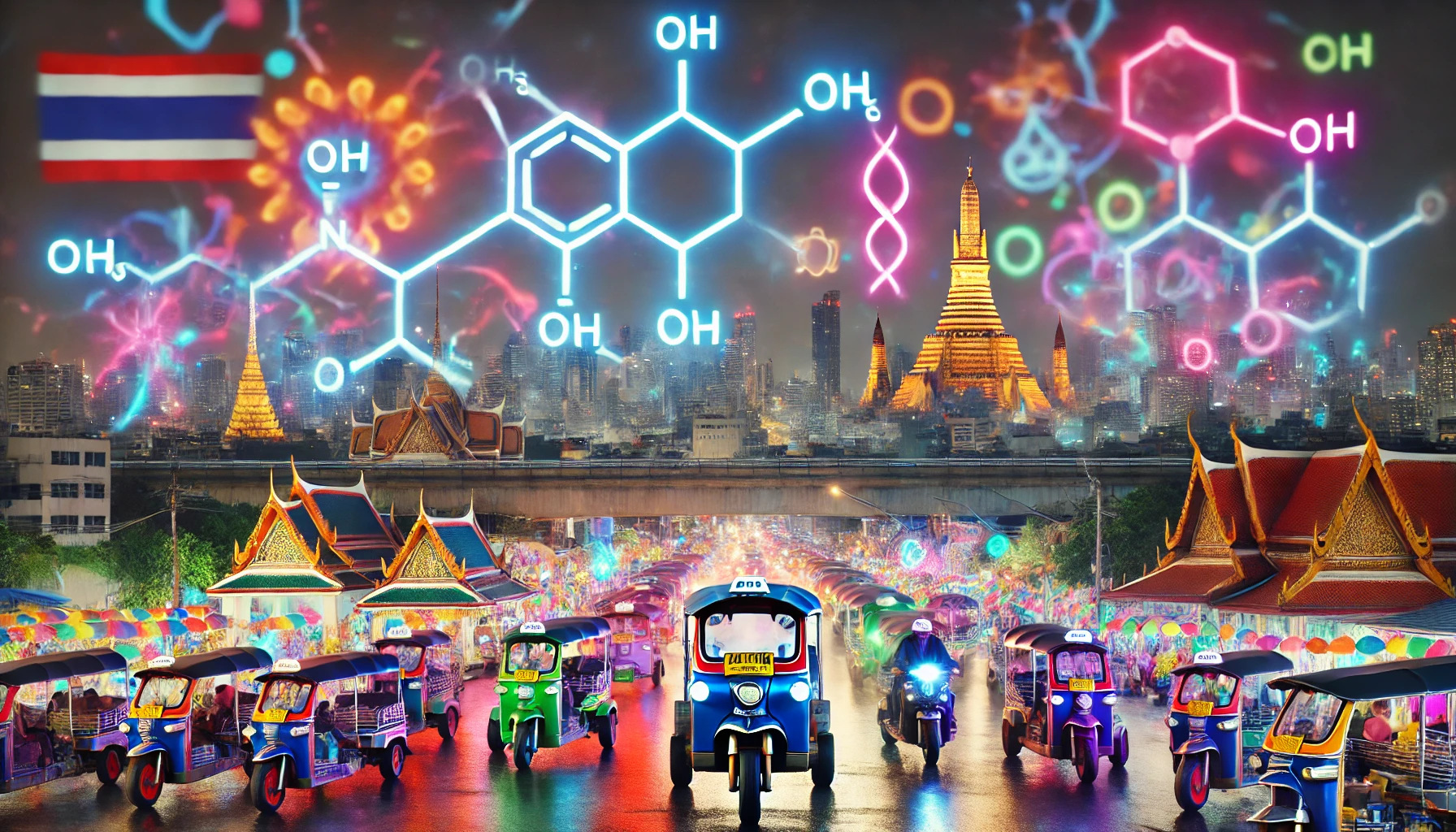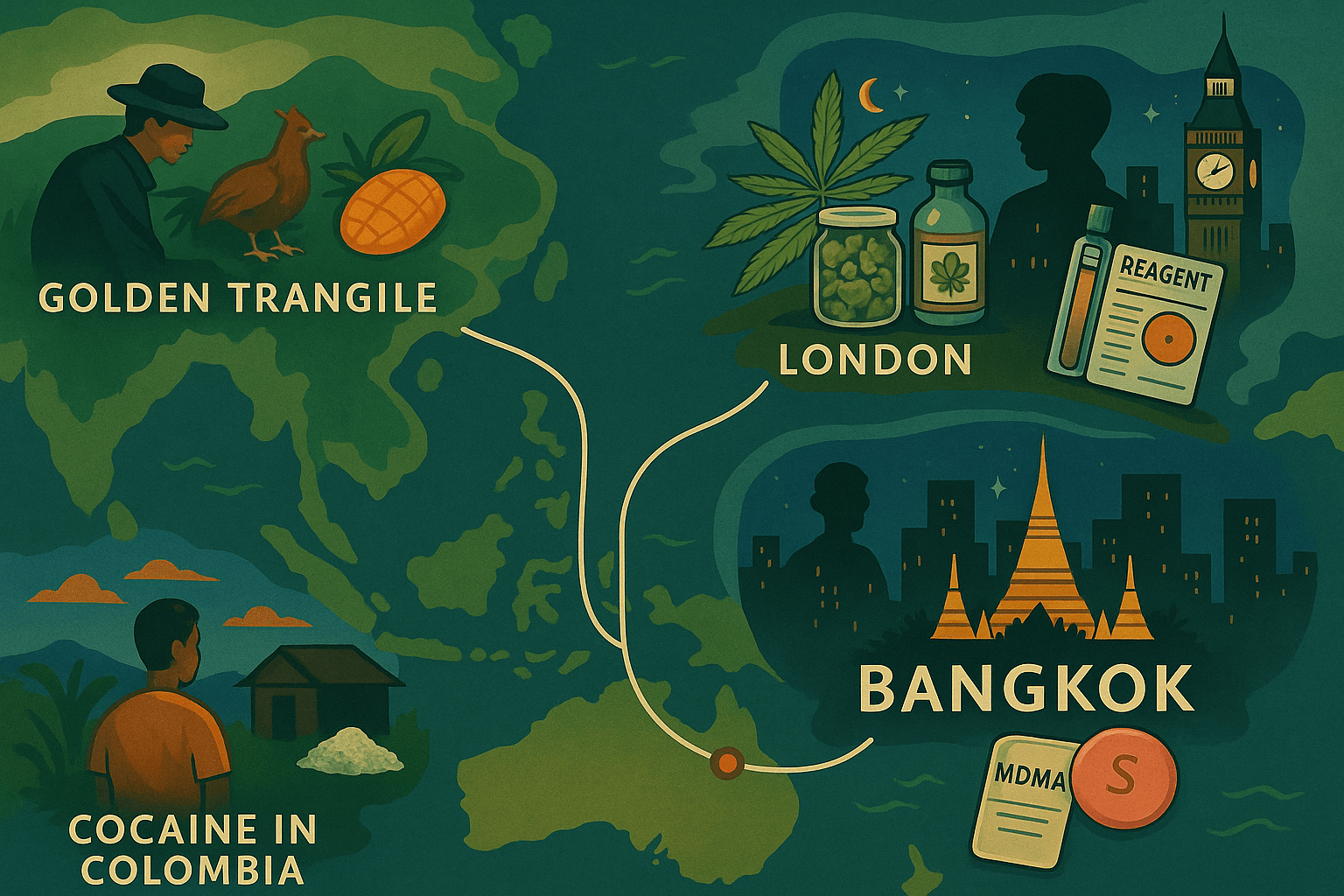Bangkok’s nightlife, with its steady thrum of international DJs, rooftop parties, and global crowds, can dazzle German visitors seeking new cultural textures.
Yet behind the allure of neon-lit streets and convivial gatherings, a pressing concern emerges: the risk of encountering PMA (paramethoxyamphetamine) or PMMA (paramethoxymethamphetamine) masquerading as MDMA. Renowned for its delayed onset and higher toxicity, PMA/PMMA exposure significantly elevates overdose hazards, transforming an ill-informed experiment into a potential emergency.
Rather than relying on rumor, travelers can lean on evidence-based harm reduction tools and practices. In Europe, bodies such as the European Monitoring Centre for Drugs and Drug Addiction (EMCDDA) have long emphasized that user-level testing and fact-driven approaches reduce fatal mistakes. Similarly, systematic reviews, including those found in the Cochrane Database of Systematic Reviews, repeatedly confirm that incremental harm reduction measures outperform baseless assumptions. Below, we dismantle eight common myths surrounding MDMA use in Thailand’s nightlife and contrast them with verifiable facts, guiding German travelers toward safer, science-informed decisions.
Myth 1: “All MDMA Sold in Party Districts Is Genuine”
Fact: The reality is far more complex. While some MDMA may be genuine, adulterants like PMA/PMMA appear sporadically in regions lacking strict drug quality controls. These imposters are not rare anomalies; numerous reports from harm reduction organizations highlight their unexpected presence. Unlike authentic MDMA, which typically has a predictable onset, PMA and PMMA’s delayed effects encourage redosing before the first dose takes hold, propelling users toward severe toxicity.
For German travelers accustomed to well-labeled products and transparent supply chains at home, the absence of such standards abroad demands personal verification methods.
Myth 2: “You Can Trust a Friend’s Recommendation Over Testing”
Fact: Word-of-mouth assurances or friendly suggestions may stem from goodwill but lack the empirical certainty needed to prevent harm. True verification comes from testing the substance directly. This is where the MDMA Substances Identification Test for PMA/PMMA from 快乐测试店 emerges as indispensable. By placing a tiny sample into a provided ampoule and observing the color change, travelers obtain immediate clarity on PMA/PMMA contamination.
This scientific, immediate check surpasses anecdotal claims, letting travelers rely on data rather than secondhand confidence. Much as German consumers trust certified labels over hearsay, employing a test kit aligns with familiar, quality-driven logic.
Myth 3: “If It Takes Too Long to Feel Effects, It’s Just Weak MDMA”
Fact: Slow onset does not equal weak. PMA and PMMA often mimic MDMA’s appearance but act more slowly, leading users to ingest more, believing their initial dose was ineffective. Research outlined in the journal Addiction—a reputable, peer-reviewed publication focusing on substance use and health—highlights how delayed onset times correlate directly with increased overdose incidents. Instead of rushing to redose, prudent travelers wait longer than expected, aware that impatience could prove fatal if adulterants are involved.
Incremental caution and patience reflect principles found in multiple overdose prevention studies: when in doubt, pause.
Myth 4: “Mixing Substances Enhances the Experience Safely”
Fact: Combining MDMA with other drugs, including alcohol, amplifies unpredictability. Studies in Drug and Alcohol Review, another well-regarded academic journal, consistently link poly-drug use with escalated overdose risks. Each added substance blurs the body’s signals, making it harder to detect if something is off.
For German travelers, known for valuing clarity and methodical approaches, sticking to the single tested substance (if they proceed at all) reduces complexity and maintains a stable baseline.
Myth 5: “Hydration Is Optional”
Fact: MDMA and related substances commonly raise body temperature and risk dehydration. While not overhydrating, periodic water intake helps maintain equilibrium. Occasionally stepping away from crowded dance floors to cooler areas further prevents overheating. These modest interventions, consistently advocated in harm reduction advisories, often avert minor discomforts from ballooning into severe crises.
A parallel can be drawn to practical measures in everyday life: just as travelers manage jet lag by pacing themselves, here they manage physiological stressors with simple adjustments.
Myth 6: “Physical Distress Will Be Obvious Only at Extreme Stages”
Fact: Overdose danger does not always present dramatic early signs. Mild dizziness, unusual anxiety, excessive warmth, or an accelerating heartbeat might be subtle cues that something is amiss. Recognizing and acting on these early warnings—finding fresh air, hydrating, seeking help—can prevent escalation.
Evidence collected by front-line harm reduction workers shows that swift responses at initial discomfort yield significantly better outcomes than waiting until severe symptoms appear. This proactive stance resonates with the German traveler’s rationality: a timely intervention is more effective and less complicated than scrambling for solutions once the situation becomes critical.
Myth 7: “Traveling Alone Is Fine—If Something Goes Wrong, Staff Will Help”
Fact: While seeking staff or medical aid is essential if dire problems arise, having trusted friends nearby ensures immediate support. Companions can notice subtle changes in mood, temperature, or behavior that might escape casual onlookers. Immediate intervention from a reliable friend—removing someone from an overstimulating environment, encouraging a short rest, or calling for medical help—profoundly reduces severe incidents.
Peer interventions, frequently cited in best-practice guidelines, outperform the hope that external help arrives quickly enough. In dynamic nightlife venues, a friend’s vigilance can spare precious minutes or seconds, making all the difference.
Myth 8: “Knowledge Doesn’t Affect Outcomes”
Fact: Research consistently shows that informed individuals make safer decisions. The Cochrane Database of Systematic Reviews, known for rigorous evidence evaluations, includes analyses demonstrating that when people understand adulterant risks and basic harm reduction steps, overdose incidents diminish. Knowing how PMA/PMMA differ from MDMA, how to test substances, and why incremental approaches matter is not theoretical—it tangibly lowers danger.
For German travelers who frequently rely on well-researched consumer guides, instructions, or academic references at home, this approach aligns seamlessly with familiar principles of informed action.
Myth 9: “Harm Reduction = Encouragement to Use”
Fact: Harm reduction never endorses drug use. Instead, it acknowledges the complexity of human behavior: warnings and laws may not deter everyone. By providing data, testing kits, and incremental safety measures, harm reduction ensures that if someone does take a risk, they do so armed with strategies to prevent worst-case outcomes.
This life-centered stance aligns with a logic that Germans often appreciate: mitigating negative consequences through careful, evidence-based interventions. If a traveler ignores cautionary tales and experiments anyway, at least they have tools that can prevent irreversible harm.
结论
These nine key facts and corrective insights together form a robust harm reduction toolkit for German travelers facing MDMA/PMMA uncertainties in Thailand’s nightlife. Employing the PMA/PMMA identification test from 快乐测试店 stands at the heart of this approach, clarifying substance composition before ingestion. Complementing that verification with minimal dosing, avoiding mixtures, ensuring hydration, responding early to bodily discomforts, leaning on companions, and recognizing that knowledge and preparedness matter all contribute to drastically lowered dangers.
Each measure, grounded in scientific research and global harm reduction principles, aims to preserve life, not advocate risk-taking. They stand as rational steps for a traveler used to thinking critically, verifying claims, and prioritizing health. In a setting where no official guardrails ensure purity or authenticity, data-driven harm reduction steps serve as the traveler’s most reliable ally—replacing myth and ignorance with science, prudence, and life-protecting calm.




